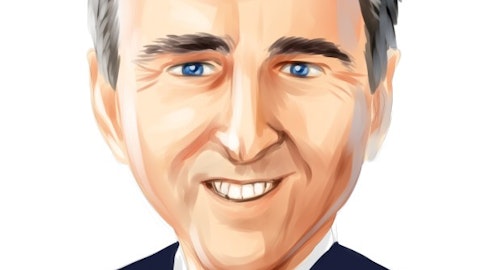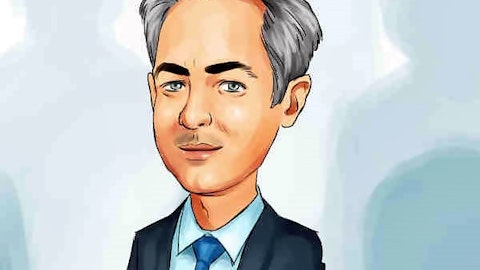Today, we have prepared a good read for you – top 5 creepiest spokesmen ever: what were these companies thinking?
Marketing is weird. Sometimes, companies for whatever reason think that it would be a good idea to get oddball characters as spokesmen. In all fairness, those ideas sometimes work, but not without making at least some of us cringe. Here’s a quick example: if you thought that the current McDonald’s Corporation (NYSE:MCD) clown is creepy, try searching for an earlier version of that clown, which is undoubtedly something straight out of horror flicks.

Jonathan Weiss/Shutterstock.com
In this article we’ll take a look at the unsettling spokespersons (and one spokesdog) that Restaurant Brands International Inc (NYSE:QSR), Jack in the Box Inc. (NASDAQ:JACK), Domino’s Pizza, Inc. (NYSE:DPZ), Trivago NV (NASDAQ:TRVG), and Yum! Brands, Inc. (NYSE:YUM) used to try and sell us stuff, all of which became famous (or rather, infamous) for their creepiness.
The Burger King
We start our list of top 5 creepiest spokesmen ever: what were these companies thinking with Burger King, a fast food chain currently owned by Restaurant Brands International Inc (NYSE:QSR), which has used an animated king called The Burger King as its mascot since the restaurant’s inception in 1953. A cartoon featuring the character, which underwent some changes through the decades, transformed the character from a crowned child to a Tudor-era-styled man complete with a red beard. The cartoon was phased out in the late 1980’s.
The Burger King was resurrected in 2003, thanks to an ad agency employee who discovered an oversized head of the King from the 1970’s on eBay. This time, the real-life mascot wore royal attire, white leotards, and a huge, emotionless, plasticy head that grins creepily at you like a stalker. The Internet, such as it is, immediately called the mascot “The Creepy King,” which is not something you’d want selling your burgers. But the restaurant ran with the concept, showing ads of the King in surprise situations like in bed with someone or looking through their windows. Unfortunately, the company’s market share fell from 15.6% in 2003 to 14.2% in 2008, five years into the creepy campaign. Amazingly, it took the fast food chain until 2011 to stop the campaign, with its CFO admitting that the mascot scared away women and children.
Follow Restaurant Brands International Inc. (NYSE:QSR)
Follow Restaurant Brands International Inc. (NYSE:QSR)
Receive real-time insider trading and news alerts
Jack Box
In 1994, Jack in the Box Inc. (NASDAQ:JACK) which ranks top 5 creepiest spokesmen ever: what were these companies thinking was on the ropes. A decade earlier, they decided to present a mature image by blowing up the company’s classic clown heads in commercials. The move, aside from being pretty much anything but mature, drew complaints from parents over violence. Years later, the food chain’s E. coli outbreak blew up, which resulted in lawsuits and negative publicity. As a desperate move to deflect public attention from the fiasco, the company launched a campaign to bring back the clown it previously exploded.
This time, the clown mascot was a normal human body in business attire and a big white head that looks like a smiley, with cold, blue eyes. His first appearance was in an ad where he “blew up” the company’s board in revenge for the clown blow-ups of the past decade. That ad also received complaints, because it was released in the midst of the Oklahoma City bombing and other similar incidents. Nonetheless, the ad was humorous enough to garner general public approval, and the food chain has rolled with it since. By the time Rick Sittig, the Jack’s creator and the mascot’s voice for two decades, ended work with the food chain in 2015, the company had grown from 1,200 branches to 2,200 and increased its stock price from $3 to $91. Proving once and for all that sometimes, creepy mascots can actually help sell a product.
Follow Jack In The Box Inc (NASDAQ:JACK)
Follow Jack In The Box Inc (NASDAQ:JACK)
Receive real-time insider trading and news alerts
We’ll check out three more creepy mascots on the next page.
Noid
In the third place of our list of top 5 creepiest spokesmen ever: what were these companies thinking we have a grotesque, paranoid mascot that surprisingly worked until a crazy yet tragic crime put a stop to it. Domino’s Pizza, Inc. (NYSE:DPZ) developed the Noid, basically a villainous, pot-bellied curmudgeon wearing a skintight rabbit costume, in 1986 as a character that is always on a mission to delay pizza orders. The strange sales pitch, apparently, is that only Domino’s is Noid-proof, assuring 30-minute delivery for the pizza. Stranger still, the public was receptive to the Noid, which subsequently had two video games and a line of merchandise. The 80s, everybody.
But here’s the strangest part of the story: the Noid campaign stopped because of a hostage situation involving a real-life namesake. Three years after the mascot’s launch, Kenneth Lamar Noid, a paranoid schizophrenic who accused Domino’s Pizza, Inc. (NYSE:DPZ) of creating the character to spite him, took two restaurant employees hostage. Noid the character abruptly stopped appearing, while Noid the person committed suicide years later.
Follow Dominos Pizza Inc (NASDAQ:DPZ)
Follow Dominos Pizza Inc (NASDAQ:DPZ)
Receive real-time insider trading and news alerts
Trivago Guy
When hotel price comparison website Trivago NV (NASDAQ:TRVG) aired its first commercial in the U.S in 2012, they chose to do so with a middle-aged man explaining the website. Tim Williams, who appeared in an unbuttoned shirt tucked in to belt-less pants while speaking in a deep, somber voice about the website, became an instant celebrity, with millions of people debating whether he was creepy or sexy.
Trivago NV (NASDAQ:TRVG) has since aired a lot of commercials in the U.S, to the point that it is spending up to 88% of its revenue on advertising, which means more air time for the creepy-or-sexy Williams. Fast forward to 2016, and the company just launched an IPO this month.
Follow Trivago N.v. (NASDAQ:TRVG)
Follow Trivago N.v. (NASDAQ:TRVG)
Receive real-time insider trading and news alerts
Taco Bell Chihauhua
Sometimes the creepy spokesperson doesn’t need to be a person at all. In 1997, Yum! Brands, Inc. (NYSE:YUM)’s Taco Bell launched an ad depicting a cute Chihuahua dog with the catchphrase “Yo quiero Taco Bell!” The creepiness factor is due to the fact that the catchphrase is spoken in a deep male voice, quite unsettling coming from an adorable little Chihuahua. The dog, whose real life name was Gidget, starred in plenty of Taco Bell commercials, with at least two more catchphrases and even a tie-in with the movie Godzilla in 1998. And now, let’s see what else we have on our list of top 5 creepiest spokesmen ever: what were these companies thinking.
However, the commercial is only as good as the restaurant’s sales. The dog’s ads ended when the chain suffered a record-breaking sales decline in one quarter in 2000. As for the dog, Gidget passed away in 2009.
We hope you’ve enjoyed reading this article on top 5 creepiest spokesmen ever: what were these companies thinking? – please leave some comments below.
Follow Yum Brands Inc (NYSE:YUM)
Follow Yum Brands Inc (NYSE:YUM)
Receive real-time insider trading and news alerts
Disclosure: None





